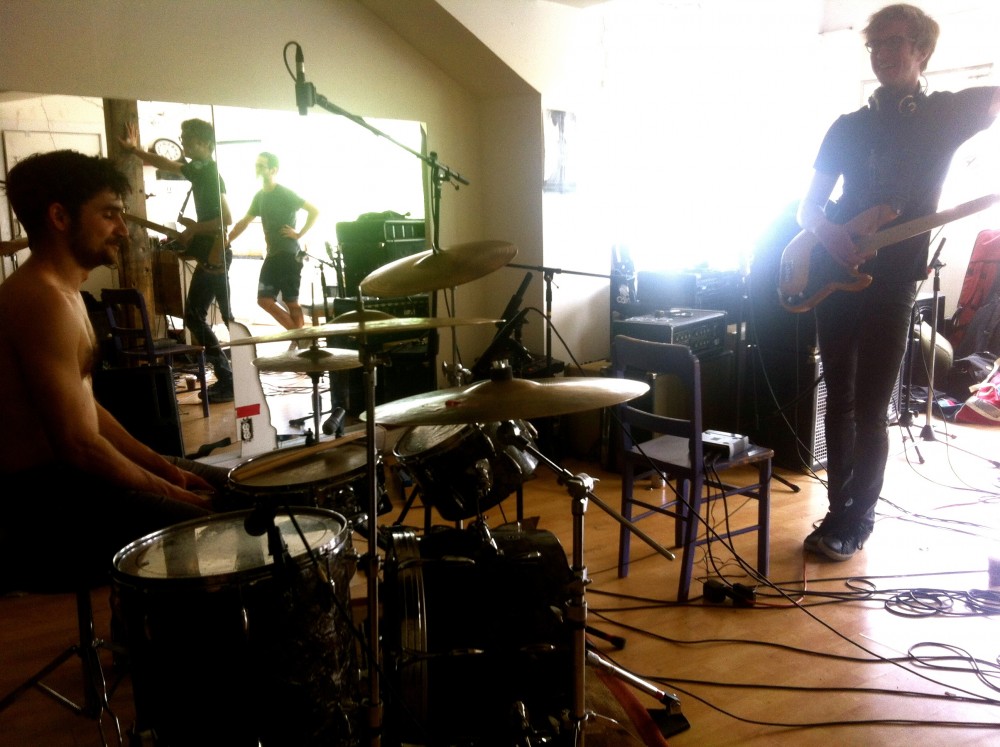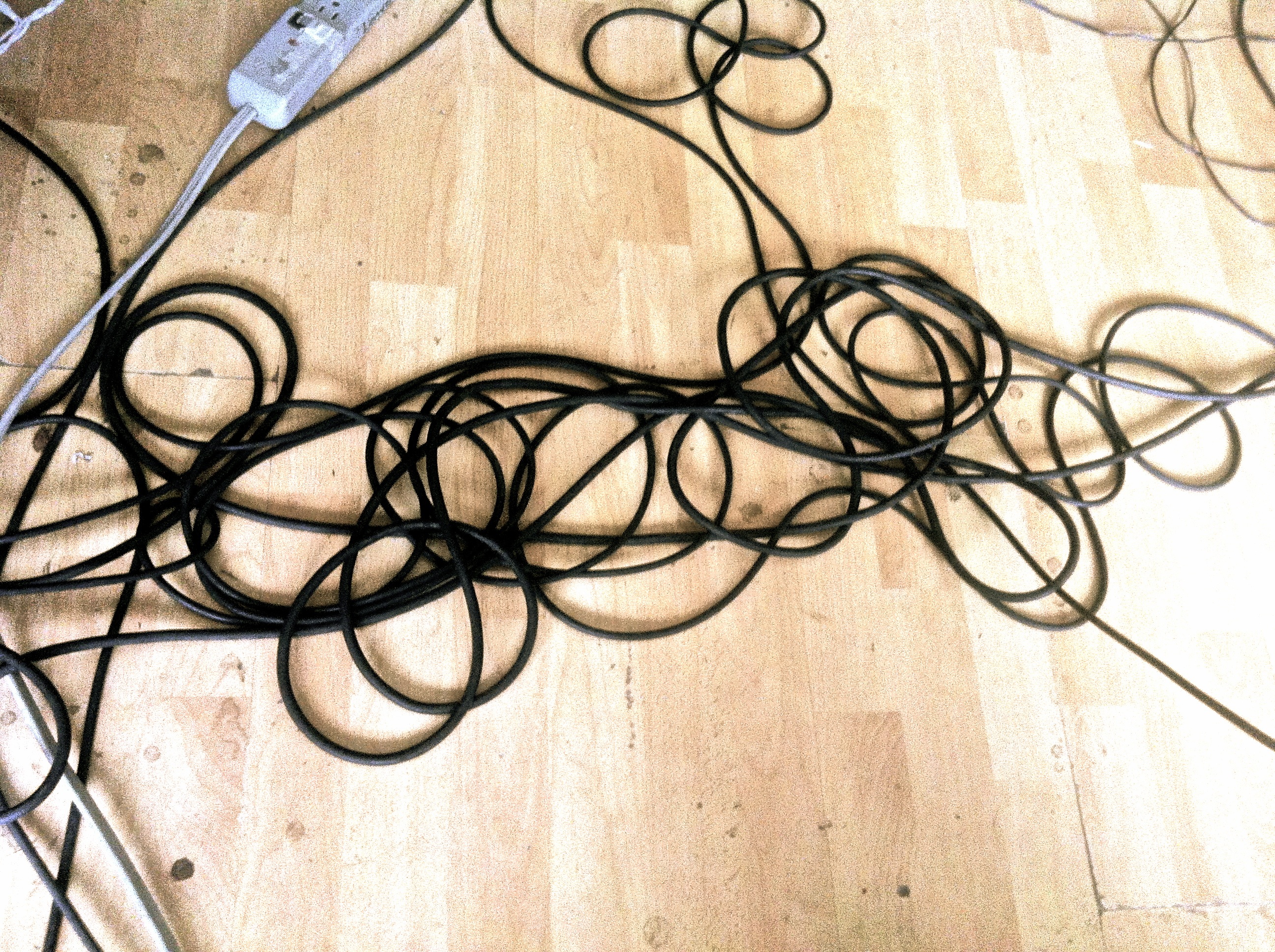
More Debt! Part 1 – Getting Started
Debt is a loud rock band from Montréal.
So says their bandcamp page, and I’m doing my best to make sure that is EXACTLY what they sound like!
I spent the last several days holed up in a gorgeous Mile End jamspace with the band and a plethora of instruments and amplifiers. We had our work cut out for us: Debt were interested in a full length, 10 track album, and we were gonna get the entire thing on tape (or in ones and zeros, as the case may be) in 3 days.
The last time I’d worked with the band, we’d cut a pair of songs in an afternoon. The end result of those sessions wound up online as Debt’s Demos, which we were all pretty happy with at the time. However, for the full length record, we decided we wanted a bigger, badder, more agressive sound.
We also decided we were happy enough with the bed tracks on the Demos, but that we’d like to revamp the guitar tones and add some extra layers.
With that in mind, we booked three solid days in their jam space, and planned to spend as many waking hours as possible nailing down an album we’d all be proud of.

Decisions, Decisions
Having worked with the band before on numerous projects, I knew they had serious control over their sound. Knowing when to push and when to pull, and using dramatic tempo changes to their advantage, it was essential that we capture the band’s live groove in the studio.
Thus: No Click Tracks. Screw ’em.
No one listens to rock music with a metronome pressed against their ear. We listen with our bodies. The goal is to make people feel the intensity of any given moment, not impress them with its rigid, robotic temporal consistency.
However, since clarity and “size” were serious goals of the session, and the room we were working in didn’t feature any kind of baffling to reduce bleed, having the guitar live in the room seemed a little like tonal suicide. A little bleed can sound incredible, beefing up tracks and making things gel. Too much, and when it comes time to mix, you’re hooped!
So, problem: keeping the guitar out of the bed tracks, but maintaining the band’s live feel.
Solution: DI’d guitar scratch track in everyone’s headphones, overdubbing the guitar tracks after the fact.
Personally, I’ve found that the same isn’t necessary when it comes to the bass. It’s easier to punch in and clean up than the guitar, and so long as its volume is kept in check and the amp is positioned correctly, it can play very nicely with the drums.
It also certainly helped that Drummer Farid Rener and Bassist Drew Nelles play in total lock-step together.
So we had a plan:
Drums and Bass first as bed tracks, with Guitars and Vocals overdubbed after the fact.
Time to make a Record.
